What is a digital creator?
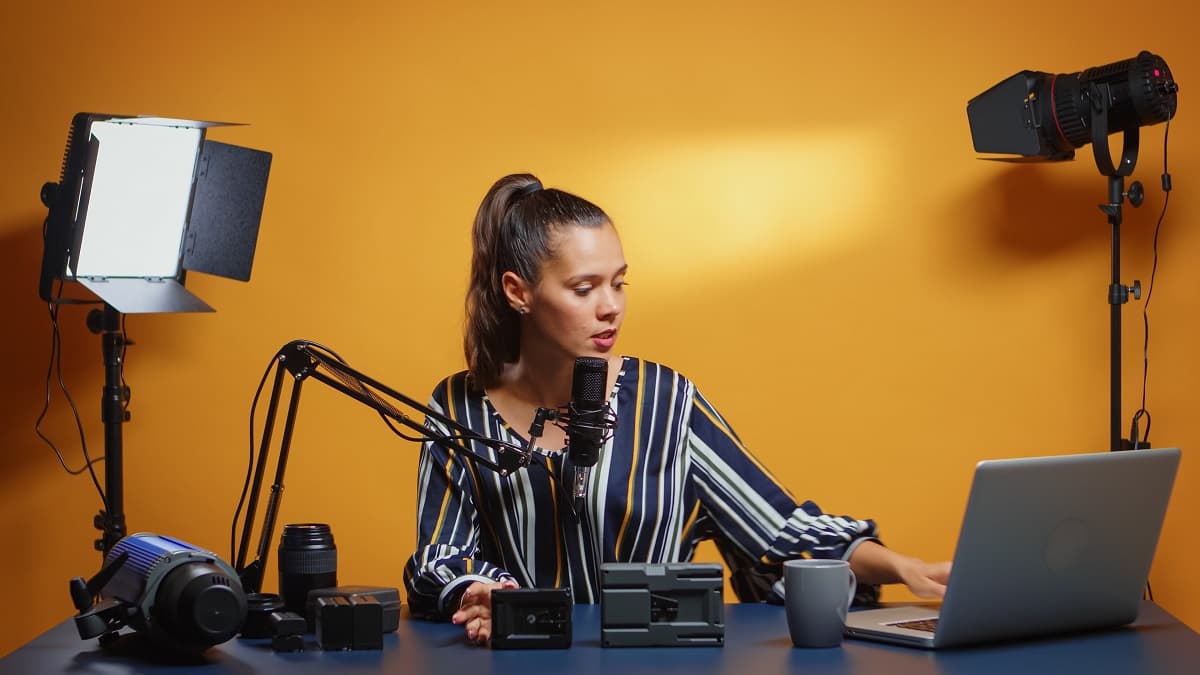 Over 50 million people consider themselves to be influencers or digital creators
Over 50 million people consider themselves to be influencers or digital creators
It may feel like, everywhere you look, you’re surrounded by digital creators, social media professionals, and influencers. You’re not wrong! Nowadays, over 50 million people consider themselves to be influencers or digital creators according to Influencer Marketing Hub, which also estimates that the influencer marketing industry is set to grow to approximately $21 billion this year.
But what is a digital creator exactly? While the terms ‘digital creators’ (and even ‘digital content creator’) and ‘influencers’ may seem interchangeable, they’re not quite the same thing. In this guide, we’ll explore what it means to be a digital creator, how it differs from being an influencer, and the key points in the digital creator vs influencer debate.
What is a digital creator?
A digital creator, or digital content creator, is someone who produces and publishes content such as writing, photography, or video across various online platforms. The content created by digital creators can vary widely, from educational blog posts to entertaining videos, each serving a unique purpose and audience. This could include social media, blogs, podcasts, or videos. They create and share content that is authentic to them and their brand, and they usually have a specific niche or audience they target. Additionally, digital creators often create multimedia content like photographs, GIFs, and infographics to engage their audience.
A digital creator is someone who focuses on building a community of followers, engaging with their audience, and sharing their often unique perspective on a subject.
How is a digital creator different from an influencer?
While there is an overlap between an influencer and a creator, there are some key differences: Digital creators focus on creating original content, while influencers leverage their audience's attention to promote products or services. This distinction highlights the varying goals and approaches of these two roles in the digital space.
The main difference between a creator and an influencer lies in their focus: a creator generates original and engaging content, unique to them and their personal brand, across various platforms, such as social media, blogs, YouTube, podcasts, and more. Their main emphasis is on crafting high-quality, valuable, and often niche-specific content that resonates with a particular audience.
Creators are known for their expertise, passion, and skill in their chosen area, whether it’s photography, writing, art, cooking, or any other creative pursuit. Their goal is to entertain, educate, or inspire their audience through their content, often contributing something new and unique to the online landscape. A creator’s income can come from a variety of sources, such as sponsorships, membership, merchandising sales, or ad revenue. Selling digital products like e-books and online courses is also a popular and profitable monetization method for creators, allowing them to share their expertise while generating income.
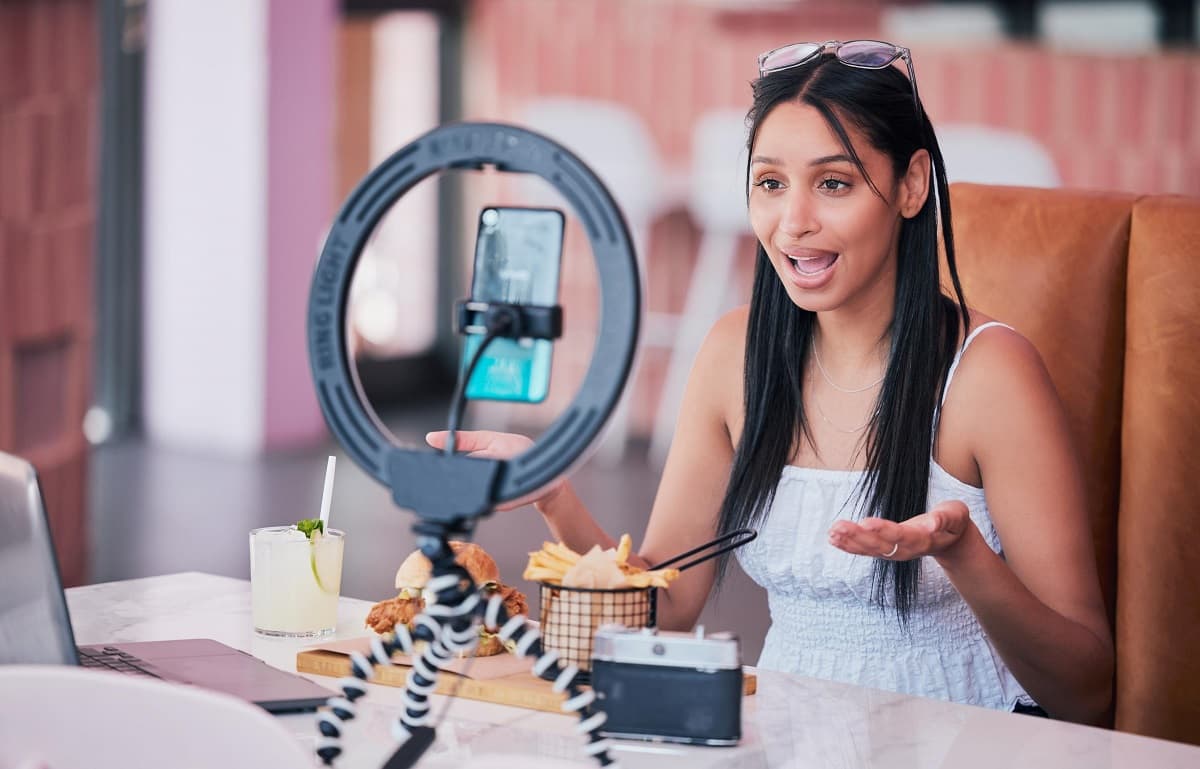 Digital creators are known for their expertise and passion, about topics like as food
Digital creators are known for their expertise and passion, about topics like as food
An influencer, on the other hand, is an individual who wields a certain level of authority, credibility, and reach within a specific online community or industry. Influencers have cultivated a significant following on social media – often in the hundreds of thousands or even millions – and possess the power to impact the opinions, behaviors, and decisions of their audience.
While they may also create generalised content, the focus of an influencer is more on shaping perceptions and driving engagement around products, services, trends, or ideas. Influencers often collaborate with brands and businesses for promotional activities, leveraging their credibility and relationship with their followers to endorse products or experiences. They typically work with brands to create sponsored content, and their income is often tied to the number of followers they have.
Types of Digital Content
Exploring Various Forms of Digital Content
Digital content comes in many forms, catering to diverse audience preferences and creator goals. The primary types of digital content include:
Written Content: Blog posts, articles, ebooks, and social media posts are examples of written content. This type of content is ideal for sharing information, telling stories, and educating audiences. Whether you’re crafting a detailed how-to guide or a captivating story, written content allows you to connect deeply with your readers.
Multimedia Content: This category includes photographs, vector graphics, memes, GIFs, and AI-generated art. Multimedia content is perfect for visual storytelling and can be used across various platforms. Eye-catching visuals can enhance your brand’s appeal and make your content more shareable.
Video Content: Videos are a popular form of digital content, including long-form videos, shorts, livestreams, video templates, webinars, and online courses. Video content is excellent for engaging audiences, sharing knowledge, and promoting products. Platforms like YouTube and TikTok have made video content a staple in digital marketing strategies.
Audio Content: Podcasts, music, and sound effects fall under audio content. This type of content is ideal for audiences who prefer listening to information or entertainment. Podcasts, in particular, have seen a surge in popularity, offering creators a platform to discuss niche topics and build a loyal listener base.
Digitized Art: Paintings, graphic designs, logos, and NFTs (Non-Fungible Tokens) are examples of digitized art. This type of content is perfect for artists who want to showcase their work online. With the rise of digital art marketplaces, creators can now monetize their art in innovative ways.
Creating a consistent content schedule is crucial for audience retention and engagement, ensuring that your audience knows when to expect new material and stays connected to your work.
How to become a digital creator
Becoming a professional digital creator requires a variety of skills and it won't happen overnight. It takes time, effort, and commitment to build a successful brand.
To become a digital creator, you need to follow a few steps, such as identifying your niche, gathering the necessary equipment, and developing a content strategy.
The most successful digital content creators are highly focused entrepreneurs with a business-mindset, and well-defined content and communications strategies.
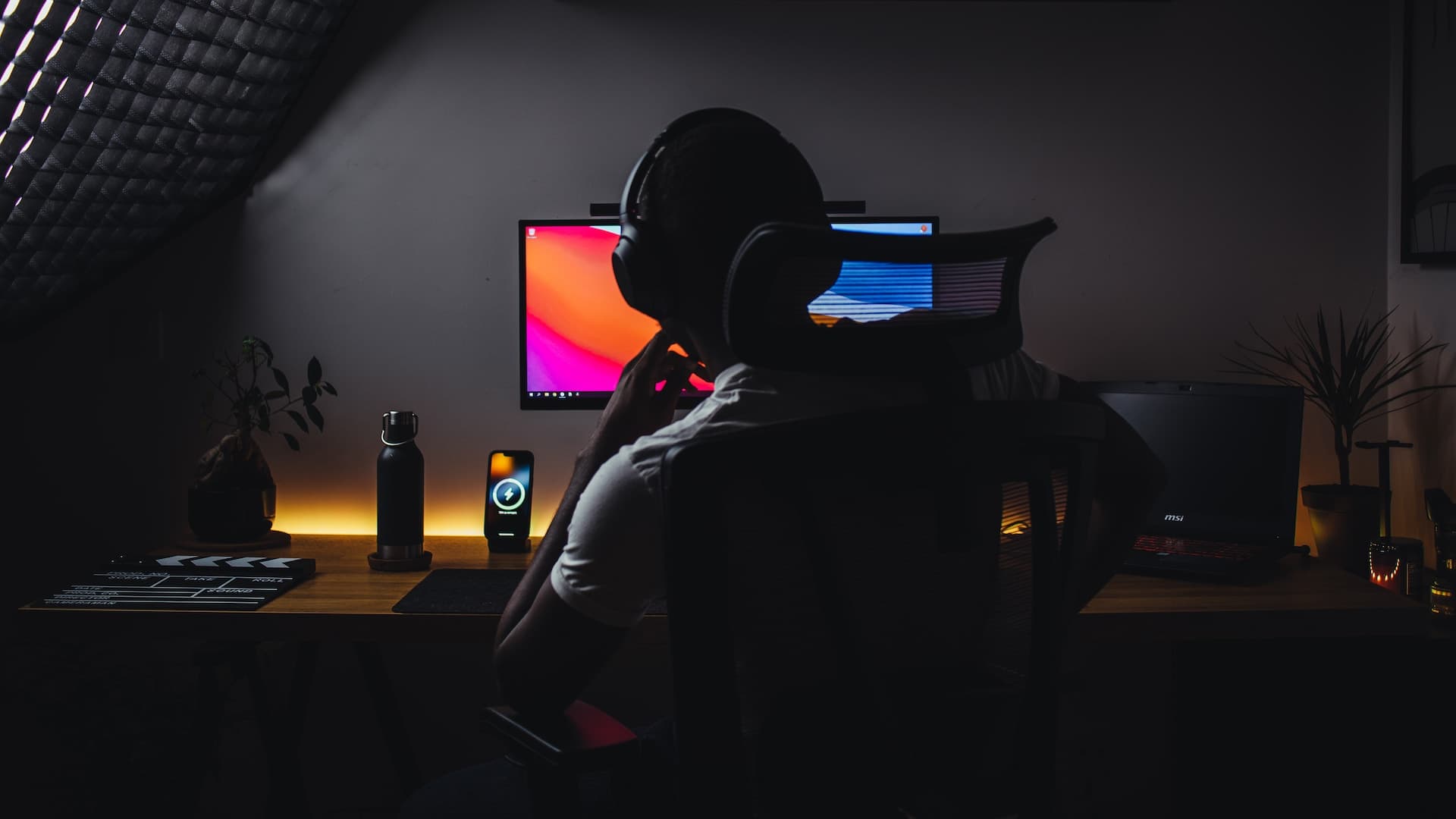 Most successful creators are business-minded entrepreneurs with well-defined strategies.
Most successful creators are business-minded entrepreneurs with well-defined strategies.
Are you looking to become a digital creator? You may need a creator kit! Check out our article What is a content creator kit? Essential hardware for all creators.
Here are some of the most crucial skills you need to be a digital creator:
Creativity
As a digital creator, you need to be creative in everything you do – the clue is in the title! Creativity includes coming up with new ideas for content, speaking well on camera if you are making video, creating entertaining content that captures your audience’s attention, and creating eye-catching visuals – and this includes thumbnails for videos as well as attractive images on Instagram.
You’ll also need to be constantly finding new ways to engage with your audience, such as "Ask Me Anythings" (AMAs), or sharing behind-the-scenes footage.
Communication
Clear communication is key when building a brand. You'll need to clearly communicate your ideas and brand message in order to captivate your target audience.
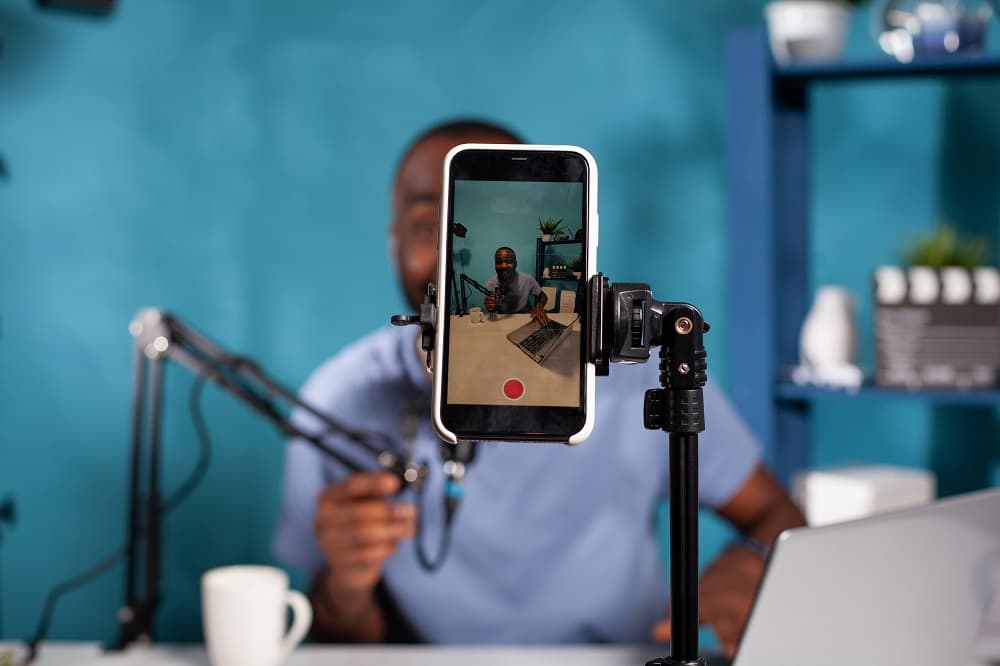 You'll need numerous skills to be a digital creator such as strong communication skills
You'll need numerous skills to be a digital creator such as strong communication skills
Plus, you'll potentially have meetings with brand reps and companies looking to work with you or sponsor your content, so getting your point across concisely and clearly is essential.
Business sense
As above, having meetings with brands and fellow creators means you need to know how collaborative projects will work to benefit you and everyone involved.
Are you aiming to reach a new audience? Re-ignite the passion with less engaged members? Spark a debate? Perhaps encourage the sale of something? All of these require clever brand positioning, knowing your USP inside-out, and an ability to sell – both ideas and products.
Understanding the different monetization options available, such as sponsored content, affiliate marketing, and selling digital products, is crucial for building a sustainable income.
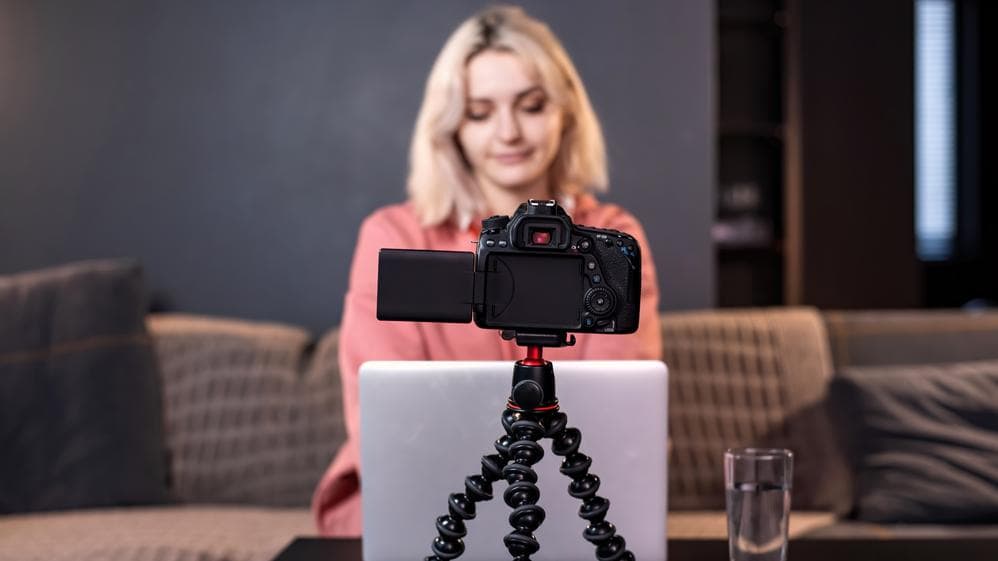 Being a digital creator means you need an ability to sell
Being a digital creator means you need an ability to sell
Being active in collaborating with other digital creators in your niche is relevant here too. Collaborations can expand your reach, introduce you to new audiences, and provide opportunities for learning and growth. Attend industry events, join online communities, and network with like-minded individuals to build relationships and gain insights.
Being approachable and adaptable
Some people find it difficult or even painful to listen to feedback. But you’ll need to welcome criticism (when it’s constructive!) and use it as an opportunity to improve. Pay attention to your audience’s preferences and adapt your content accordingly. Consistently evaluate and refine your work to deliver value to your audience, and keep producing content that meets their evolving preferences.
Platforms and Tools
Essential Platforms and Tools for Digital Creators
To succeed as a digital creator, it’s crucial to have the right platforms and tools. Here are some essential ones:
Social Media Platforms: Facebook, Instagram, Twitter, TikTok, and YouTube are popular social media platforms for digital creators. Each platform has its unique features and audience, so it’s essential to choose the ones that best fit your content and target audience. For instance, Instagram is great for visual content, while YouTube is ideal for long-form videos.
Content Management Systems (CMS): WordPress, Wix, and Squarespace are popular CMS options for digital creators. These platforms allow you to create and manage your website, blog, or online store. They offer customizable templates and plugins to help you build a professional online presence.
Graphic Design Tools: Adobe Creative Cloud, Canva, and Sketch are popular graphic design tools for digital creators. These tools help you create visually appealing graphics, logos, and other multimedia content. Whether you’re designing social media posts or creating a brand logo, these tools offer the flexibility and features you need.
Video Editing Software: Adobe Premiere Pro, Final Cut Pro, and DaVinci Resolve are popular video editing software for digital creators. These tools help you create professional-looking videos and edit your footage. High-quality video content can significantly increase your engagement and reach.
Online Course Platforms: Udemy, Teachable, and Kajabi are popular online course platforms for digital creators. These platforms allow you to create and sell online courses, ebooks, and other digital products. They provide the infrastructure you need to share your knowledge and monetize your expertise.
Resources
The great thing about the internet is that it’s easier than ever to acquire the necessary technical skills to excel as a digital creator in your chosen field. Listen to podcasts, read books and visit social media. Utilize software, tools, and equipment relevant to your craft. Utilize these resources to enhance your content creation skills and stay updated with the latest trends and techniques. Here are some useful resources for aspiring digital creators:
Online courses and videos
There are many online courses available that can teach you the skills you need to become a digital creator. Some popular platforms include Skillshare, Udemy, Coursera, and LinkedIn Learning.
In general, learning platforms offer a wealth of resources to enhance your skills – for most industries in fact, not just the creator economy – and there’s always ample video content on YouTube. Platforms like YouTube offer a wealth of informative videos that can help you learn new skills and stay updated with industry trends.
Blogs and social
There are many blogs and articles written by experienced digital creators that can offer insights and advice. Some popular blogs include CreativeLive and Social Media Examiner.
Blogs and social media are rich sources of internet content that can provide valuable insights and inspiration for your digital creation journey.
Social media is a great way to connect with your audience and promote your work. Make sure to create accounts on the platforms that you know your target audience uses; there’s no point being on Facebook if your fans love TikTok!
Podcasts
Podcasts are a great way to learn about the latest trends in digital creation and hear from other creators. Some popular podcasts include The Creative Penn, The Accidental Creative, and The Colin and Samir Show.
Podcasts are available on different platforms, such as Apple Podcasts, Spotify, and Google Podcasts, making it easy to find and listen to content that interests you.
Networking and Collaboration
Networking and collaboration are essential for digital creators.
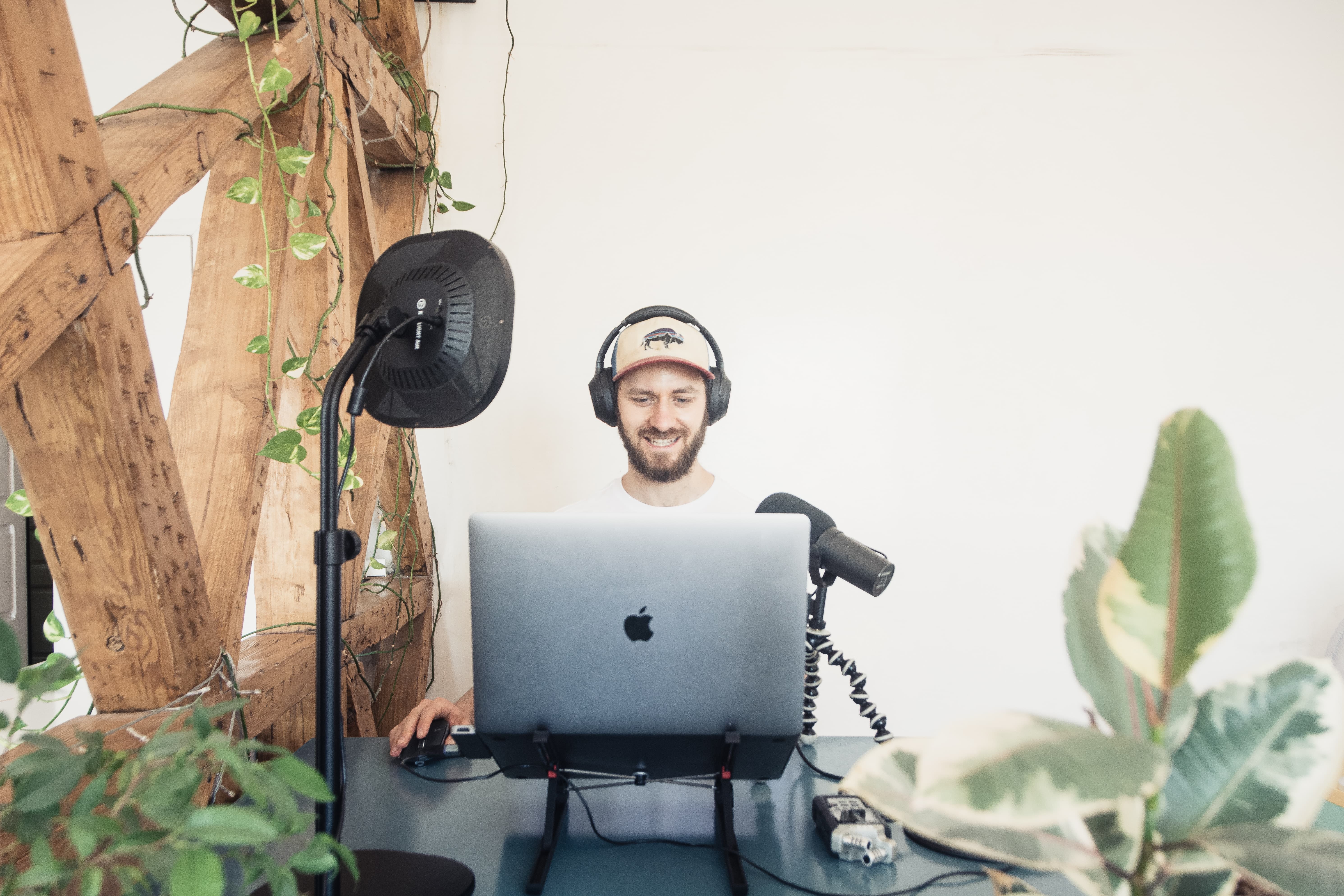 Networking with other digital creators is a great way to learn
Networking with other digital creators is a great way to learn
Here are some ways to connect with other creators and grow your audience:
Attend Industry Events: Attend conferences, meetups, and workshops related to your niche. These events provide opportunities to network with other creators, learn about the latest trends, and stay updated on industry developments. Face-to-face interactions can lead to valuable collaborations and partnerships.
Join Online Communities: Join online communities related to your niche, such as Facebook groups, Reddit forums, and Slack channels. These communities provide opportunities to connect with other creators, ask questions, and share your expertise. Engaging in these communities can help you build relationships and gain insights.
Collaborate with Other Creators: Collaborate with other creators on projects, podcasts, or videos. This helps you reach new audiences, build relationships, and create content that resonates with your target audience. Collaborative efforts can lead to innovative content and mutual growth.
Engage with Your Audience: Engage with your audience on social media, through comments, emails, or live streams. This helps you build a loyal community, understand their needs, and create content that resonates with them. Active engagement fosters a sense of community and loyalty among your followers.
Participate in Online Challenges: Participate in online challenges, such as blogging challenges or video challenges. These challenges help you stay motivated, create content consistently, and connect with other creators. They also provide opportunities to showcase your creativity and gain visibility.
By leveraging these platforms, tools, and networking opportunities, you can enhance your digital creation journey and build a successful career as a digital creator.
Networking
Face-to-face networking with other digital creators is a great way to learn from their experiences and get advice. Networking with many creators can provide valuable insights, collaboration opportunities, and support as you navigate your digital creation journey. There are many online and offline communities and events for digital creators; for example, check out the Creator Conf event.
You’ll need to practice consistently to improve your abilities. Utilize the software, tools, and equipment above relevant to your craft. It takes time and effort to become a successful digital creator so don’t get discouraged if you don’t see results immediately. Just keep creating great content and promoting yourself, and eventually you will start to see success!
Examples of successful digital creators
PewDiePie (Felix Kjellberg): Digital creator PewDiePie gained fame through his Let’s Play videos and has become one of the most subscribed YouTubers ever. PewDiePie is known for his humorous and energetic commentary on video games. PewDiePie’s large following has enabled him to become one of the most influential figures on YouTube, demonstrating the power of a dedicated audience.
Casey Neistat: A filmmaker and vlogger, Casey Neistat gained popularity for his daily vlogs, which showcased his unique storytelling style and adventurous life experiences. His creativity and cinematography skills have been highly influential on countless other digital creators.
Kevin Smith: Filmmaker, actor, comedian, and writer Kevin Smith got his big break when he directed and starred in ‘Clerks’. He went on to create the cult characters Jay and Silent Bob with Jason Mewes. Nowadays, he is a famous YouTuber, author, and the host of numerous shows on his SModcast Podcast Network, including Fatman Beyond and Hollywood Babble-On.
MrBeast: Jimmy Donaldson is known for his large-scale, often philanthropic stunts and challenges on YouTube. He often gives away significant amounts of money which has garnered mass attention and goodwill. His videos are designed to go viral, featuring attention-grabbing thumbnails and titles. MrBeast’s innovative approach has earned him over 70 million subscribers and billions of views.
Scott Aukerman: The comedian, actor, and writer is best known as the creator and host of the Comedy Bang! Bang! podcast. He created and starred in the series ‘Between Two Ferns with Zach Galifianakis’ and has appeared in shows such as Parks and Recreation. He cofounded the Earwolf podcast network and has won two Primetime Emmy Awards.
Jacques Pépin: You don’t have to be young to be a digital creator! Jacques Pépin has been cooking professionally for many decades. His latest venture, the Jacques Pépin Foundation video recipe book, merges a cookbook with a video membership service, allowing you to watch celebrity chefs make meals in their homes and print out the recipes if you want to follow along.
Gary Vaynerchuk: A serial entrepreneur, digital creator, and motivational speaker, Gary Vaynerchuk (or Gary V) is known for his expertise in digital marketing and social media. His insights on entrepreneurship, branding, and hustle mentality have inspired many.
Conclusion: What is a digital creator and how it is different to an influencer
Being a digital creator is not just about creating content, it’s about building a brand and engaging with your community or members. While it takes time and effort to build a successful brand, it’s a rewarding career that allows you to share your unique perspective with the world. However, many digital creators fail to earn substantial income; for instance, 46% earn less than $1,000 annually, highlighting the challenges of turning passion into a sustainable career.
As the demand for online content continues to grow, digital creators play a crucial role in shaping the media landscape and engaging audiences worldwide.
The digital landscape is continuously evolving, so it’s crucial to stay updated with the latest trends, technologies, and platforms. Adapt your content and strategies as needed to remain relevant and ahead of the curve.
 It's crucial to stay updated with the latest trends
It's crucial to stay updated with the latest trends
It’s also crucial to remember that Rome wasn’t built in a day, and a digital creator career won’t be forged overnight. You need to stay committed and be patient: building a successful digital creator career takes time and perseverance. Think years not weeks.
Stay committed to your craft, consistently produce quality content, and be patient with your progress. It’s a journey that requires continuous learning and adaptation.
By finding your niche, building your brand, creating engaging content, and engaging with your audience, you can become a successful digital creator!
FAQs - what is a digital creator?
How do I become a digital creator?
Embarking on the journey to becoming a digital creator requires a blend of creativity, technological proficiency, and a keen understanding of your chosen niche. There are a few ways to start your journey as a digital creator, such as taking online courses, practicing your craft, and building a portfolio. Invest in learning the necessary tools and platforms while consistently honing your craft.
Are digital creators limited to specific genres?
No, the beauty of digital creation lies in its diversity. Digital creators span various genres, including graphic design, animation, gaming, and social media content. Many digital creators explore various genres, from graphic design to gaming, showcasing the vast opportunities available in the digital realm. The digital realm is expansive, allowing creators to explore and carve their unique paths.
What role does technology play in digital creation?
Technology is the backbone of digital creation, offering tools that enable artists to bring their visions to life. A strong skill set in technology, including proficiency in software and tools, is essential for digital creators to bring their visions to life. From advanced software for graphic design to virtual reality technologies, digital creators leverage these tools to push the boundaries of creativity.
How do digital creators monetize their content?
Digital creators employ various monetization strategies, such as sponsored content, affiliate marketing, and selling digital products. Digital creators can earn money through various strategies, such as sponsored content, affiliate marketing, and selling digital products. Establishing a strong online presence and cultivating a dedicated audience are crucial components of a successful monetization strategy. Additionally, creators can earn income by placing ads on their digital content, receiving payment based on clicks, which can be a significant revenue stream for those with high traffic.
How can aspiring digital creators overcome creative block?
Creative blocks are inevitable, but overcoming them is part of the creative process. Taking advantage of new techniques and tools can help you overcome creative block and find fresh inspiration for your content. Experiment with new techniques, take breaks, and seek inspiration from various sources. Connecting with other creators and participating in online communities can also provide valuable support.
Subscribe for updates
Stay up to date on Memberful's latest product updates, insights, and teaching centered around growing your community.
Have an audience?
Customers like Mythical (28+ million subscribers) rely on Memberful to power their membership communities.
Get started for free